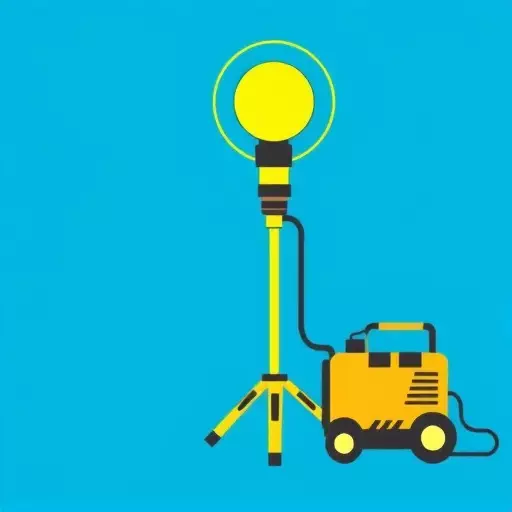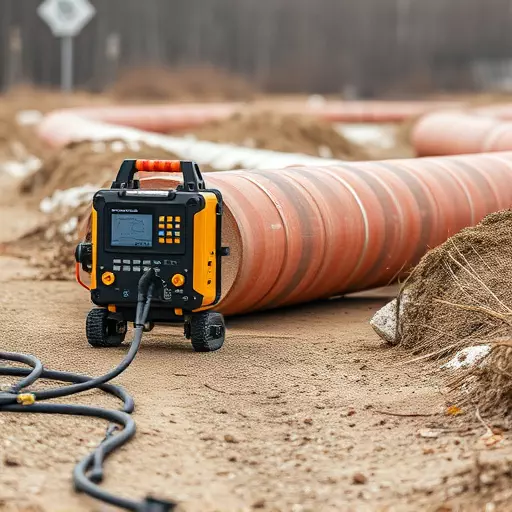Sonde training and certification are crucial for professionals in the pipeline industry to master Sonde and Locating Toledo. This process teaches the use of specialized equipment for identifying and mapping underground pipes, covering theory, controlled environments, simulations, and real-world scenarios. By combining hands-on practice with knowledge of equipment components, functions, and maintenance, professionals gain confidence in navigating complex underground landscapes accurately and efficiently. Advanced sonde technology has transformed pipe locating, making it a game-changer in urban areas like Toledo, where efficient pipeline network management is vital. Continuous education ensures professionals stay updated with the latest sonde and locating techniques, enhancing infrastructure management in this bustling metropolis.
“Unveiling the Power of Sonde Training and Certification: Navigating Toledo’s Pipeline Landscape
In the realm of infrastructure management, precise pipe location is paramount, and sonde technology stands as a game-changer. This comprehensive guide delves into the intricacies of sonde training and certification, essential for professionals in Toledo aiming to master pipe locating. From understanding the fundamentals of sonde training to exploring advanced techniques, we provide an in-depth overview. Discover the role of sonde equipment in enhancing accuracy, and learn from real-world case studies showcasing successful pipeline network navigation in Toledo.”
- Understanding Sonde Training: An Overview of the Process
- The Role of Sonde in Pipe Locating: A Comprehensive Guide
- Essential Sonde Equipment for Accurate Pipe Location
- Advanced Locating Techniques Using Sonde Technology
- Preparing for Certification: Key Steps and Best Practices
- Finding Toledo's Pipeline Network: Case Studies and Success Stories
Understanding Sonde Training: An Overview of the Process

Sonde training and certification are crucial steps in mastering the art of locating Toledo—a vital skill for professionals in the pipeline industry. This process involves learning how to use sonde equipment for pipe locating, a technique that employs specialized tools to identify and map underground pipes. The journey begins with understanding different sonde and locating techniques, each tailored for specific challenges. Trainees are taught how to operate these devices effectively, ensuring precision and safety during deployment.
The training covers various scenarios, from practicing in controlled environments to simulations that mimic real-world obstacles. It emphasizes the importance of thorough knowledge of sonde equipment, including their components, functions, and maintenance. By combining theoretical learning with hands-on practice, professionals gain confidence in utilizing sonde and locating techniques to navigate complex underground landscapes, ensuring efficient and accurate pipe identification.
The Role of Sonde in Pipe Locating: A Comprehensive Guide

In the realm of pipe locating, a sonde plays a pivotal role, serving as a specialized tool to navigate beneath the earth’s surface. This device is an indispensable component in the arsenal of professionals tasked with identifying and mapping underground pipes. Sonde and locating techniques have revolutionized how we approach pipe locating, ensuring precision and efficiency. By employing sonde equipment for pipe locating, technicians can swiftly scan through diverse terrains, pinpointing the precise locations of subterranean pipes.
The versatility of sondes lies in their ability to adapt to various situations. From detecting metal pipes to tracing plastic ones, these tools offer a comprehensive guide for locating Toledo’s intricate network of underground utilities. This innovative approach not only streamlines the process but also enhances safety by minimizing excavation and reducing potential damage to surrounding infrastructure.
Essential Sonde Equipment for Accurate Pipe Location

Accurate pipe location is a cornerstone of successful sonde training and certification. To achieve this, professionals in the field rely on specific Sonde equipment designed for precise identifying and mapping of underground pipes. Among the essentials are high-quality sondes equipped with advanced sensors capable of detecting metallic and non-metallic pipes alike. These devices, often integrated with GPS technology, provide real-time data, enhancing location accuracy.
Additionally, a comprehensive set of locating tools, such as locators, probes, and imaging systems, is crucial for navigating complex underground landscapes. Sonde and locating techniques must be mastered to interpret sensor readings accurately and navigate around obstructions. The combination of specialized equipment and skilled technicians ensures effective pipe locating, a vital step in infrastructure maintenance, construction projects, and public safety.
Advanced Locating Techniques Using Sonde Technology

In today’s world, advanced sonde technology has revolutionized the field of pipe locating, making it a game-changer for professionals in the industry. The traditional methods of manual digging and trial-and-error are being replaced by sophisticated equipment that can accurately map underground infrastructure with remarkable precision. Sonde and locating techniques have become indispensable tools for utility companies, ensuring efficient and safe excavation.
These advanced locating techniques involve the use of sonde equipment, which is a specialized tool designed to detect and trace pipes, cables, and other utilities buried beneath the surface. By emitting signals and interpreting the data, sondes enable professionals to precisely pinpoint the location of underground assets. This technology is particularly valuable in urban areas where navigating a labyrinthine network of underground utilities is challenging, making Sonde and Locating Toledo a highly sought-after service.
Preparing for Certification: Key Steps and Best Practices

Preparing for a sonde training and certification involves several key steps and best practices. First, acquire comprehensive knowledge about sonde equipment for pipe locating, understanding its components, operation, and maintenance. Familiarize yourself with different sonde and locating techniques, including ground penetration, electromagnetic, and radio frequency methods. Practice these techniques in controlled environments to build proficiency and gain hands-on experience.
Additionally, ensure you adhere to industry standards and regulations related to sonde use, such as safety protocols for personnel and environmental protection. Regularly update your skills through advanced training programs, staying abreast of the latest advancements in sonde technology and locating practices. Networking with experienced professionals can also provide valuable insights and guidance throughout your preparation process.
Finding Toledo's Pipeline Network: Case Studies and Success Stories

In the realm of infrastructure maintenance, especially in urban areas like Toledo, efficient pipeline network management is paramount. Here, sonde training and certification come into play as crucial tools for professionals aiming to master sonde and locating techniques. By employing specialized sonde equipment, experts can accurately map and identify underground pipelines, a process known as pipe locating. This non-destructive method involves advanced technologies that transmit signals through the ground, allowing workers to visualize and trace pipeline networks.
Case studies from Toledo have showcased the transformative power of this training. Success stories highlight how certified professionals equipped with sonde skills have successfully navigated complex underground landscapes, ensuring safe and efficient construction projects. These examples underscore the importance of continuous education and certification in keeping pace with evolving locating techniques. For those delving into this field, understanding sonde equipment and its applications is a game-changer, enabling them to contribute significantly to Toledo’s robust pipeline infrastructure management.


